The Supreme Court’s EPA Ruling, Explained
What the West Virginia v. EPA decision means for the agency, climate action, and the future of federal protections.
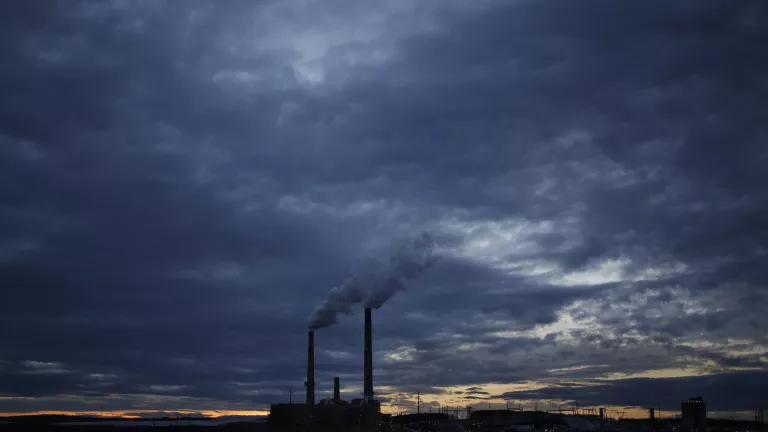
Dominion Resources’s Mount Storm coal plant in West Virginia
The Supreme Court’s recent ruling in West Virginia v. Environmental Protection Agency is a setback to the EPA’s ability to curb carbon pollution. The 6-to-3 decision holds that the agency’s authority to implement a key part of the Clean Air Act doesn’t include directing power plants to shift from dirty sources of energy, such as coal, to cleaner ones like wind and solar.
The Court’s majority got there through a sweeping new “major questions doctrine,” with broad implications. But the decision still leaves the EPA with significant authority to use the same part of the Clean Air Act to set technology-based standards that make power plants operate more cleanly. Now it’s critical for the EPA to move ahead on the path the Court has left open. And action is urgent. The United States is the world’s second-largest carbon emitter, and its power sector accounts for a quarter of those emissions. The climate movement will now have to work that much harder to ensure cleaner methods of generating our electricity—something we absolutely must do if we’re serious about avoiding the worst impacts of climate change.
Here’s what you need to know about the case.
The Background
Congress passed the modern Clean Air Act in 1970 and charged the newly created EPA with fighting air pollution at the federal level. One part of the Clean Air Act specifically targets pollution from industrial sources, explicitly authorizing the EPA to define the “best system of emission reduction” for each different industry.
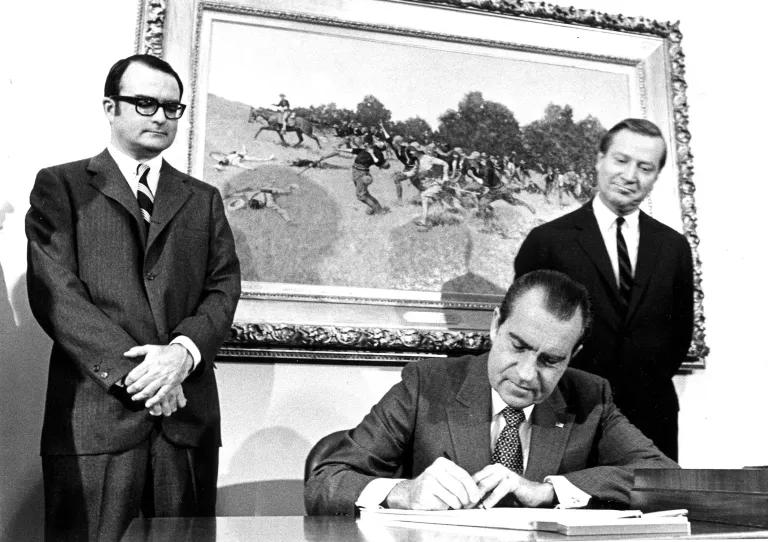
EPA Administrator William Ruckelshaus looks on as President Richard Nixon signs the Clean Air Act on December 31, 1970.
Power plants are the nation’s largest industrial source of air pollution, including the carbon emissions that drive climate change. In an attempt to reduce carbon pollution from coal- and gas-burning power plants, the Obama administration adopted the Clean Power Plan in 2015. Under that plan, the EPA determined that power companies could cut their emissions through a combination of installing emission controls and transitioning to cleaner forms of energy. In response, coal companies, some parts of the power industry, and allied states sued, and in early 2016, the Supreme Court issued a stay, preventing the Clean Power Plan from taking effect.
But then a funny thing happened: Even though the rule never went into effect, market forces had already begun to drive a major transformation within the industry. Power sector emissions were falling fast—so fast that they actually reached the EPA’s 2030 goal more than a decade early, in 2019.
Oblivious to these trends (and denying the reality of climate change), then president Donald Trump said he would repeal the Clean Power Plan and replace it with a do-nothing alternative called the Affordable Clean Energy rule. Trump’s rule adopted an “inside the fence” approach, which dropped any limits on gas plant emissions and restricted standards for coal plants to trivial efficiency improvements that would cut emissions by less than 1 percent over the coming decade.
In the early days of 2021, however, the U.S. Court of Appeals for the District of Columbia struck down Trump's repeal of the Clean Power Plan and his replacement plan. In doing so, that court rejected the Trump administration’s position that the Clean Air Act mandated an inside-the-fence approach, and nothing more. In effect, President Joe Biden inherited an opportunity to take a fresh approach; and indeed, the new EPA administrator, Michael Regan, promised to write a new rule on a “clean slate.”
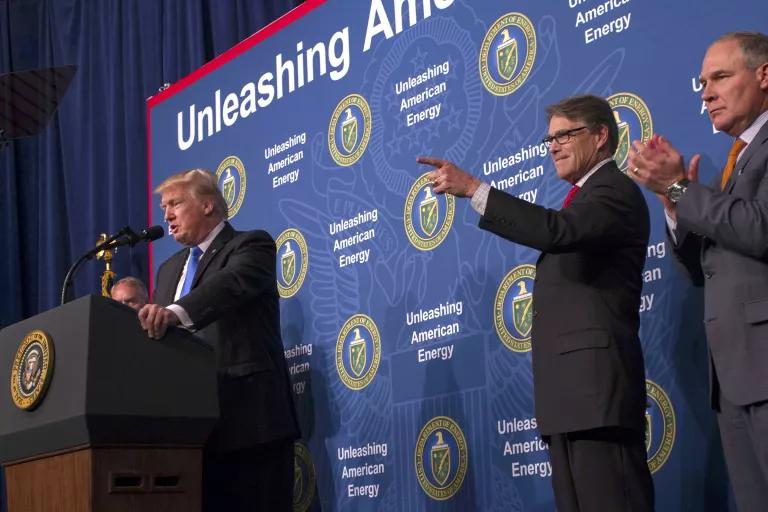
President Trump speaks alongside Energy Secretary Rick Perry and EPA Administrator Scott Pruitt.
But coal companies and coal-loving states decided to try to block the EPA even before the new rule was written. Together, they petitioned the U.S. Supreme Court to reverse the D.C. Circuit’s decision. And surprisingly—given that the Clean Power Plan never went into effect and never will—the Supreme Court agreed to consider the case. This moved the fossil fuel industry closer to its goal: to permanently weaken the Clean Air Act, and, along with it, the EPA’s ability to do its job. The coal companies and their allies were “shooting for a broad rule that the EPA can’t use the Clean Air Act to tackle any significant new problem without going back to Congress each time for new, and very detailed, legislation,” says David Doniger, senior strategic director of NRDC’s Climate & Clean Energy program. “They’re counting on lobbyists and dark money to keep Congress gridlocked, so that those new laws are impossible to pass.”
The decision: what it limits and what it doesn’t
The Court found that the EPA lacks the authority to require coal-fired power plants to shift to wind, solar, and other cleaner fuel sources. Writing for the majority, Chief Justice John Roberts opined that the language of the Clean Air Act “did not clearly authorize the EPA to engage in a ‘generation-shifting approach’ to the production of energy in this country.” Under the court’s reasoning, only Congress can authorize an action of such legal and economic consequence.
But the Court did not say that the EPA lacks any authority to regulate emissions from existing power plants and vehicles. Rather, the majority noted that, for decades, the EPA has set technology-based standards to make pollution sources “operate more cleanly.” So while the agency may not be able to tell power plant operators that they must shift from coal to renewables, it can still issue standards that would require individual facilities to install new pollution-control measures. The task now before the EPA is to find ways to employ these alternative measures to maximum effect, while operating within the constraints posed by the new ruling.
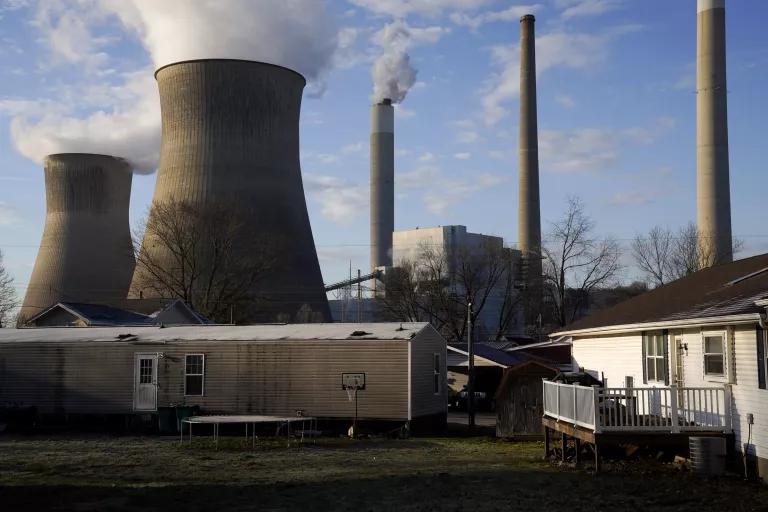
Homes bordering the coal-fired John E. Amos power plant in Poca, West Virginia.
The major questions doctrine
Significantly—and disturbingly—West Virginia v. Environmental Protection Agency marks the official arrival of the major questions doctrine into the Supreme Court’s jurisprudence. Put simply, this doctrine holds that the Court shouldn’t defer to agencies (as it has been doing for the last four decades or more) if and when an agency appears to do something novel, and if that action—most often, a regulation—might have “vast economic and political significance.” And who gets to define what a “major question” is, or what an agency is permitted to do, you ask? Why, the justices themselves, of course. So troubling is this idea that some have characterized the major questions doctrine as an unprecedented power grab by the Supreme Court, essentially allowing its more conservative justices to strike down any federal regulations that aren’t to their liking.
The major questions doctrine, Doniger says, “could turn into a huge roadblock to action by the EPA under the Clean Air Act, and could affect other laws that Americans count on to control air and water pollution.” But that’s not all: Should the court opt to apply it more broadly, “it could also block other agencies from doing their work—for example, assuring safe food, safe cars, and safe planes, or protecting consumers, investors, and workers from corporate misbehavior.”
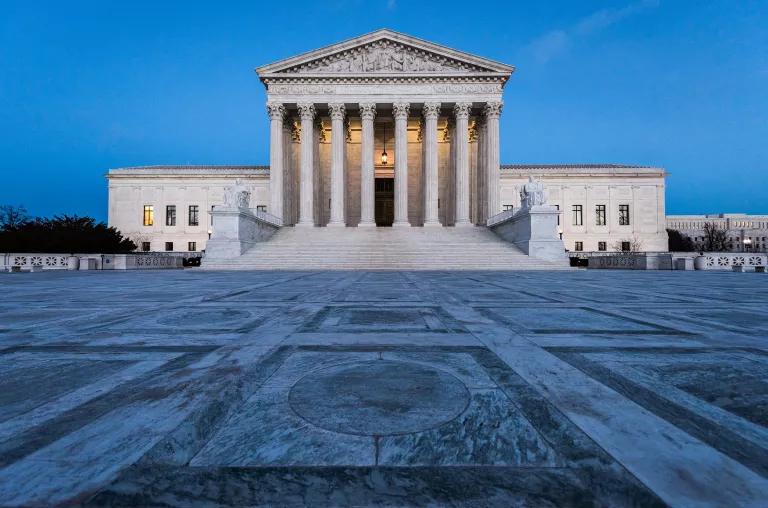
The United States Supreme Court Building
What comes next
NRDC President Manish Bapna notes that the Supreme Court’s decision “leaves the EPA in the climate fight, but makes it harder to win it.” The ruling is, indisputably, a bad one for public health and for the planet. But the decision does leave enough room for the agency to issue and enforce new standards for power plants that could increase efficiency and reduce emissions.
It’s worth noting, too, that the Court’s ruling has no bearing on the EPA’s multifaceted fight against climate, air, and water pollution on other fronts. That work to establish standards for vehicles, power-plant emissions that cross state lines, methane leaks from oil and gas production, toxic coal ash pits, and heat-trapping hydrofluorocarbons will go on. And it’s more important now than ever.
This NRDC.org story is available for online republication by news media outlets or nonprofits under these conditions: The writer(s) must be credited with a byline; you must note prominently that the story was originally published by NRDC.org and link to the original; the story cannot be edited (beyond simple things such as grammar); you can’t resell the story in any form or grant republishing rights to other outlets; you can’t republish our material wholesale or automatically—you need to select stories individually; you can’t republish the photos or graphics on our site without specific permission; you should drop us a note to let us know when you’ve used one of our stories.

The Uinta Basin Railway Would Be a Bigger Carbon Bomb Than Willow
Mercury’s Journey from Coal-Burning Power Plants to Your Plate
Our Nation—and Its National Parks—Has a Smog Problem